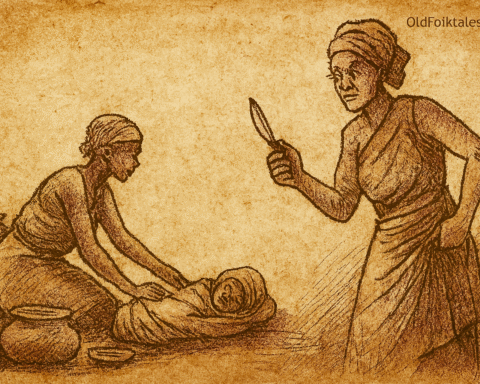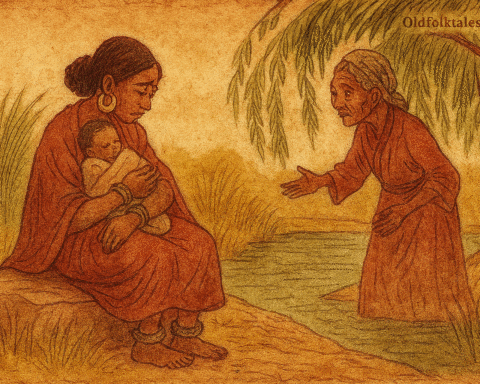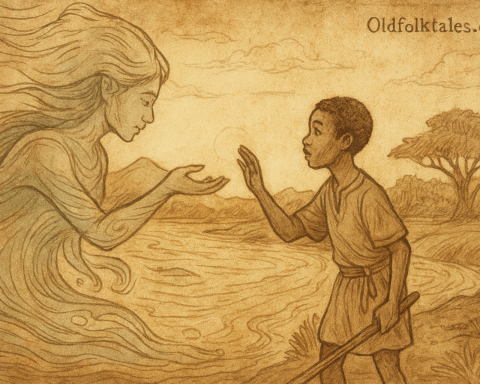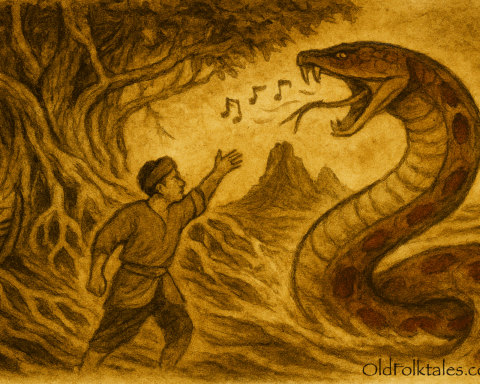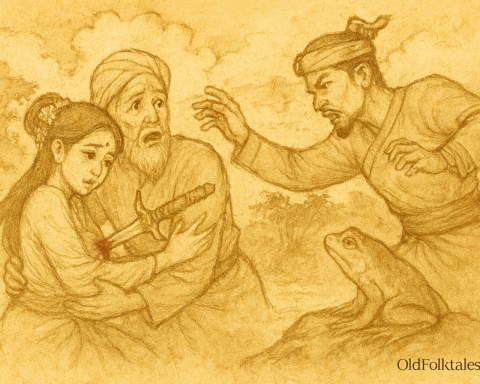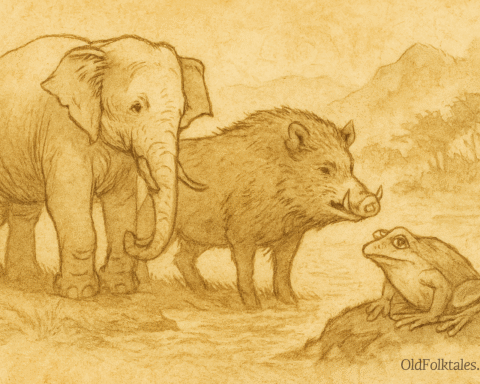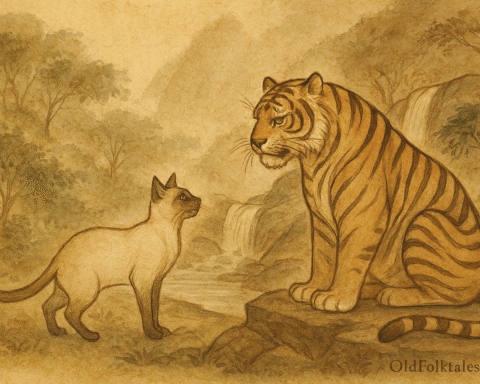Long ago, in a village nestled beside the great river Niger, the people lived peacefully under the rule of a wise but aging chief. This chief had led them for many years, and his word was law. Yet, there was one thing the villagers feared, the great snake that lived in the dense forest near the river’s edge. The snake was enormous, with scales that shimmered like polished stone and eyes that glowed like embers in the dark. The people called it the Snake Chief, believing it was the guardian spirit of the forest.
For many seasons, the Snake Chief remained hidden, watching the village silently. But then crops began to fail, and the river’s waters grew low. The villagers whispered that the Snake Chief was angry. Some said the people had forgotten to honor the forest spirits, while others blamed themselves for cutting too many trees. Whatever the cause, the fear of the snake grew.
One day, a young woman named Adama, known for her brave heart and sharp mind, stood before the council of elders. “We cannot live in fear of a creature we do not understand,” she declared. “I will go to the forest and seek out the Snake Chief. If we can speak with it, perhaps we can find peace.”
The elders were shocked. No one dared approach the great snake, but they also knew that if the drought continued, the village would wither. After much debate, they gave Adama their blessing and a small offering to bring to the forest.
Adama prepared carefully. She took with her kola nuts, yams, and a small pot of palm wine on the gifts she would present to the Snake Chief. The villagers gathered at the forest’s edge to wish her luck. Her heart beat fast as she stepped beneath the towering trees, the sunlight dimming to a greenish glow.
Deep in the forest, she found a quiet pool surrounded by thick vines and bright flowers. The water was still except for the ripples made by the largest snake Adama had ever seen. Its body coiled with slow grace, and its eyes, though fierce, held a curious intelligence.
Adama bowed low and spoke respectfully. “Great Snake Chief, I come in peace. Our village suffers, and we seek your guidance. Why has the river dried, and the crops failed?”
The snake’s tongue flickered. Then, in a voice like the rustling of leaves, it answered, “People have taken from the forest without giving back. The balance is broken.”
Adama nodded. “What must we do to restore the balance?”
The Snake Chief uncoiled slightly and said, “You must promise to protect the forest and honor the spirits who live there. Only then will the rains return, and the river swell again.”
Adama agreed on behalf of her people, promising that the village would plant new trees, stop unnecessary hunting, and celebrate the spirits each season. The snake then touched its head gently to Adama’s hand, blessing her with courage and wisdom.
When Adama returned to the village, she shared the Snake Chief’s message. The people listened and understood that they were part of the earth’s delicate web. They planted trees, tended the land with care, and held festivals to honor the spirits. Slowly, the rains came back, the river flowed full, and the crops flourished once more.
The Snake Chief was never seen again, but the village never forgot the lesson it taught through Adama’s bravery. Respect for nature and balance was kept alive in every heart, ensuring peace for generations.
Moral Lesson
The Snake Chief teaches us that respect for nature and living in balance with the earth is essential for survival. Courage to face our fears and wisdom to listen to the world around us bring harmony not only to people but to all living things. When we care for the land and honor its spirits, we ensure life’s blessings will continue.
Knowledge Check
1. What is the main message of The Snake Chief folktale?
The story emphasizes the importance of respecting nature and restoring balance to protect life.
2. Who is Adama in the story and what role does she play?
Adama is a brave young woman who speaks to the Snake Chief to save her village.
3. What caused the river to dry and the crops to fail according to the Snake Chief?
The people took from the forest without giving back, breaking the natural balance.
4. How does the village restore harmony after Adama’s meeting with the Snake Chief?
They plant trees, stop overhunting, and honor the spirits with seasonal celebrations.
5. What cultural values are reflected in The Snake Chief story?
Values of courage, respect for nature, community responsibility, and spiritual connection are highlighted.
6. Why is this tale important in African oral traditions?
It uses animal symbolism and human bravery to teach lessons about coexistence and environmental care.
Cultural Origin: West African folktale inspired by Niger River communities

